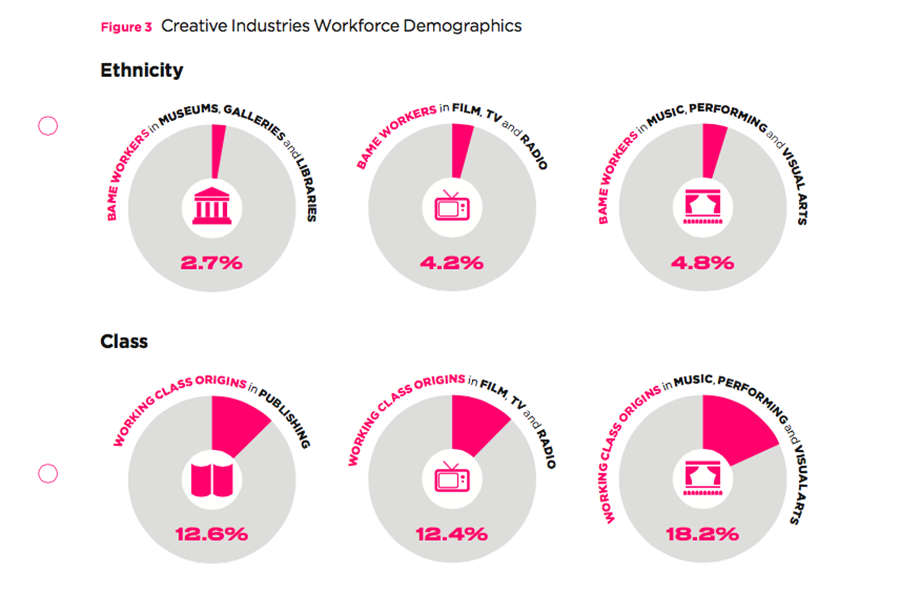
People from working-class backgrounds are vastly underrepresented in arts jobs, according to a new report from a team of sociologists in the UK. Only 18.2 percent of people working in music, performing and visual arts, come from lower-class origins, found the study, which draws from interviews with 237 participants. The problem is reinforced at the top, which is occupied by those who tend to believe they got there on their own merits and that class and social obstacles are limited.
The report, titled “Panic! Social Class, Taste, and Inequalities in the Creative Industries,” illustrates a mistaken belief that success is based on ambition, talent, and hard work. The more highly paid respondents were, the more they believed in a merit-based system. In reality, one’s family wealth, parents’ educational background, social network, gender, and race have a huge impact, creating significant barriers to entry in the field for women, the working class, and racial minority workers.
The report also found that only a sliver of British society regularly attends arts and culture events. “Basically, you have a set of people who look very much like the audience that they are serving. We could consider the cultural sector a closed segment of society,” David O’Brien, who authored the paper with Orian Brook and Mark Taylor, told Frieze.
A graphic from “Panic! Social Class, Taste and Inequalities in the Creative Industries” (2018).
Small social networks keep workplaces insular, with predominantly white, well-off culture employees typically hiring from existing contacts who tend to share their background. The wealthy also have the advantage of being able to take unpaid internships, often a crucial stepping stone in establishing a career in the arts. (The report adds that “unpaid work is endemic across cultural occupations.”)
“We’re hopeful that ‘Panic!’ could contribute towards a shift in thinking and practice,” Hadrian Garrard, director of the art organization Create London, told Frieze. “For this to happen, it’s important that we acknowledge the privilege in our own organizations and recognize that the arts are not, as things stand, representative of the population as a whole.”
Some other troubling workforce statistics show that minorities make up only 4.8 percent of those employed in music, performing, and visual arts in the UK; and 2.7 percent of workers in museums, galleries and libraries. Women make up a mere 28.4 percent of the film, TV, radio, and photography fields, but were not underrepresented in the publishing industry and museums, galleries, and libraries.
There is also a pay gap across all creative industries. Women earn an estimated annual £5,800 ($8,300) less than men in similar positions, while those who come from wealthier backgrounds continue to make more than their working-class colleagues. “Even when women or those from working-class origins make it into cultural occupations, they still struggle to compete with colleagues who are male or from upper-middle class starting points,” the report says.
The study, which claims to be “the first sociological study on social mobility in the cultural industries,” is part of a larger “Panic!” project started in 2015 and funded by the UK’s Arts and Humanities Research council, led by the Edinburgh College of Art, the University of Sheffield, and Create London. The three-part “Panic!” project draws from based responses by 2,487 culture professionals in the UK’s creative industries, including the arts, music, publishing, advertising, and information technology.